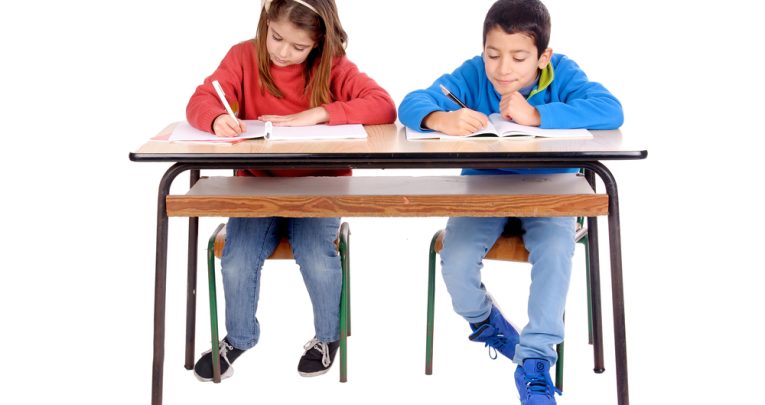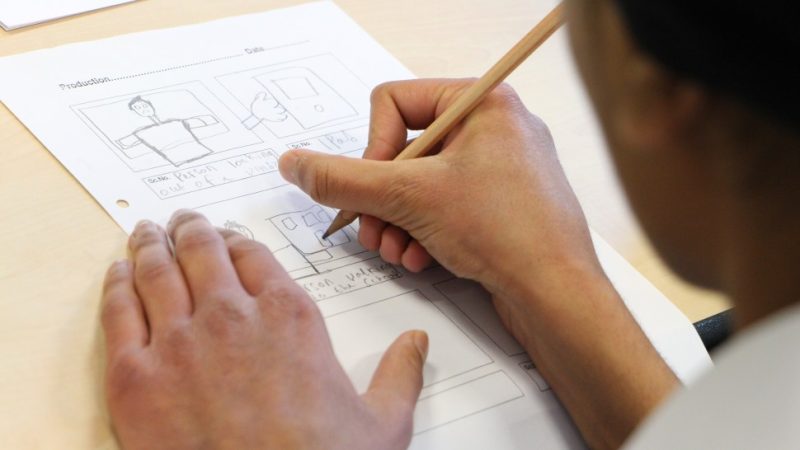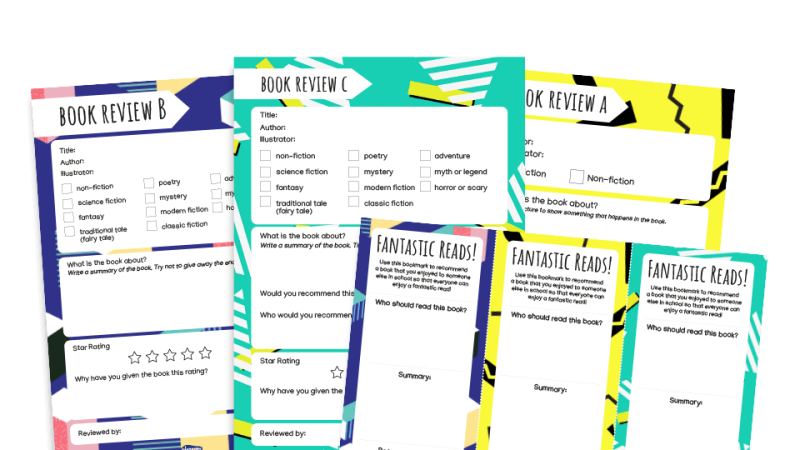Word For Word – Use The ‘Overwriting’ Technique To Turn Your Pupils Into More Confident Writers

It’s not copying, it’s overwriting, says James Clements – and if it can produce award-winning writers, it might be worth a try in your classroom too…

Writing is a complicated process. There are so many different aspects for a child to think about – the content, the structure of the text, the construction of the sentences and phrases, and all this is before handwriting, spelling and punctuation are added to the mix.
It’s no wonder that children can struggle to get everything right. To best support them, we need to provide scaffolds – targeted support that will help them to master a particular skill.
A clear model to follow
Very often, if children are thinking about what to write, they can forget they also need to pay attention to how they write. But if we can support children to think about the language they use, then they will become better writers.
A great way of doing this is give them an existing template to use as the basis for their own writing – a technique called ‘overwriting’. This is where children follow an author’s writing word-by-word, replacing the text with their own ideas.
It works particularly well as a piece of shared writing, with the original on the interactive whiteboard being discussed and then overwritten as a class. By matching their writing to that of the author’s, children have a clear, high-quality model to follow.
Here’s how it works…
1. Choose an interesting piece of text The text the children are going to overwrite needs to match what we’re trying to teach. With younger children, that might be something simple, such as using a range of different adjectives or adverbs. For older pupils, it gives the teacher the opportunity to explore ways of structuring a text – in a narrative, that could be a balance of short, punchy sentences and longer more descriptive ones.
In this example, we’re going to use the following non-fiction text about deserts:
The Namib Desert is one of the most inhospitable environments on Earth and yet, perhaps surprisingly, it is rich with life. Although it receives only a little rainfall each year, this 2000-mile stretch of coastline supports creatures such as lions, elephants and meerkats.
2. Read together and pick apart the structure This is a key step in helping children to become better writers. As teachers, we need to make them aware that the words in the text haven’t appeared by magic; they’ve been carefully chosen by the writer to create a specific effect. It is this control of language that children need to develop in order to become confident writers. In the extract above, the teacher might draw children’s attention to the use of the conjunction ‘and yet’ to set up a contradiction between the two clauses. This is supported by the embedded phrase ‘perhaps surprisingly’. The second sentence builds on the first, using a subordinate clause to give the reader to some information about the rainfall, followed by the main clause that outlines the desert and its inhabitants.
The overall effect is an informative and mature piece of writing that is far more engaging than four short sentences about the desert.
3. Show them how it’s done The next step is to work as a group or whole class to overwrite this as a piece of shared writing. This gives the teacher the opportunity to model the writing process and help the children to think about structure. The core structure of the text is kept, but the topic is changed from a desert to a coral reef:
The Great Barrier Reef is the largest coral reef on Earth and yet, perhaps surprisingly, it is made of billions of tiny living creatures called coral polyps. Although it is home to many creatures including 1500 species of fish and six types of turtle, this protected nature reserve is under threat from pollution and climate change.
If children were simply asked to write about the Great Barrier Reef, it’s unlikely that many would have structured their writing like this.
4. Now it’s their turn The next step is to ask children to overwrite the text independently. The whole point of any scaffolding is that it can eventually be taken down, allowing children to use what they’ve learnt in their own writing. Some children are likely to need some teacher or peer support to do this, and others will need feedback to improve.
Giving children the chance to learn from their mistakes and make corrections and improvements are both key features of good writing teaching.
5. Set some rules An additional step, once children have got the hang of overwriting, is to give them some abstract rules taken from the text. For the text above, a teacher might ask children to write two sentences about a place, making sure that:
a) Their first sentence has two clauses joined by the conjunction ‘and yet’ b) The second sentence starts with a dependent clause
As with overwriting, restricting children’s writing in this way helps them to think about the language they use, rather than just the content.
6. Off they go! (With a gentle reminder) The holy grail of the process seeing a child able to employ what she’s learnt in the writing sessions to her own writing. Anyone who’s taught writing to primary children knows this isn’t something they necessarily do automatically.
As well as lots of practice, it can be helpful to remind children about what they’ve learnt in previous sessions before they start to write. For instance, “It would be great to see you using some of the sentence structures we used when we were writing about the Great Barrier Reef in your pieces about the Amazon Rainforest’. Some children almost need permission to use the techniques they’ve been practising in their own work.
While this approach to teaching writing can seem restrictive, it’s worth remembering that this is just one tool in a teacher’s armoury for teaching writing. It is a single approach that can be used sparingly to help children to develop awareness of the choices authors make, and the effect these decisions have on a reader.
When the author Elmore Leonard was first learning his craft as a writer, he used to take Ernest Hemingway’s stories and type them out, changing words and phrases but trying to retain the rhythm of Hemingway’s writing.
If overwriting is a good enough approach for an award-winning novelist and screenwriter, it might just help Katie and Tom in 3F to become confident writers.
11 Great Texts For Overwriting
Non-fiction How to Keep Dinosaurs by Robert Mash The Wonder Garden Jenny Broom & Kristjana Williams
Stories Clockwork by Philip Pullman The Dreamsnatcher by Abi Elphinstone Oh No, George! by Chris Haughton Hoot Owl, Master of Disguise by Sean Taylor Would you Rather… by John Burningham
Letter writing The Last Polar Bears by Harry Horse The Jolly Postman by Janet and Allan Ahlberg
Instructions Wholly Irresponsible Experiments by Sean Connolly Instructions by Neil Gaiman
James Clements is an English adviser and the creator of shakespeareandmore.com; you can follow him at @James_ShMore











